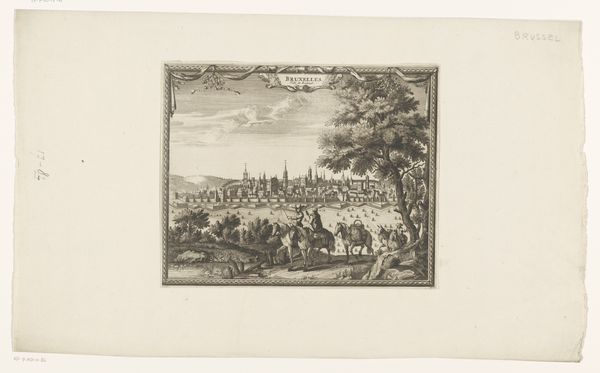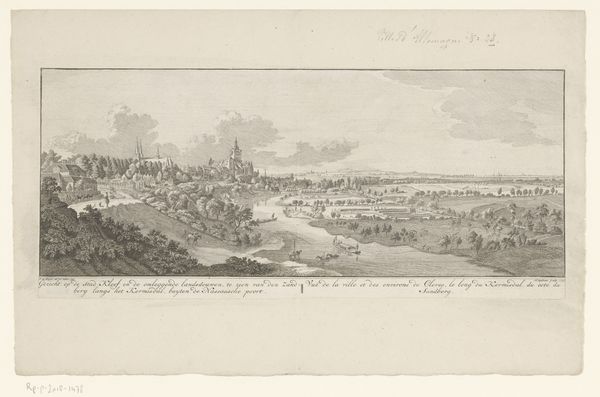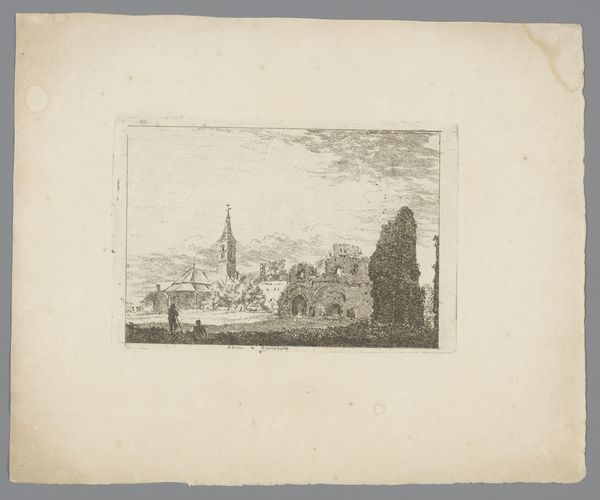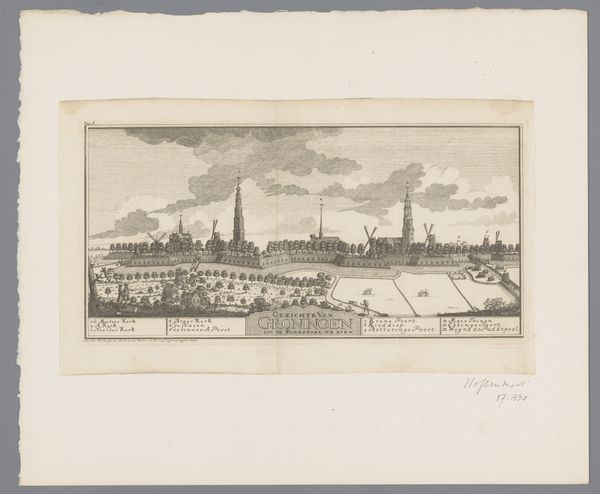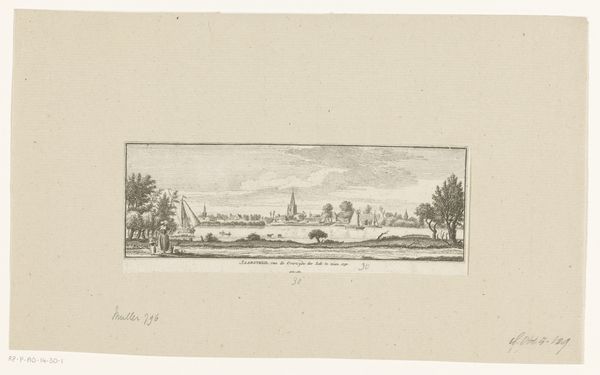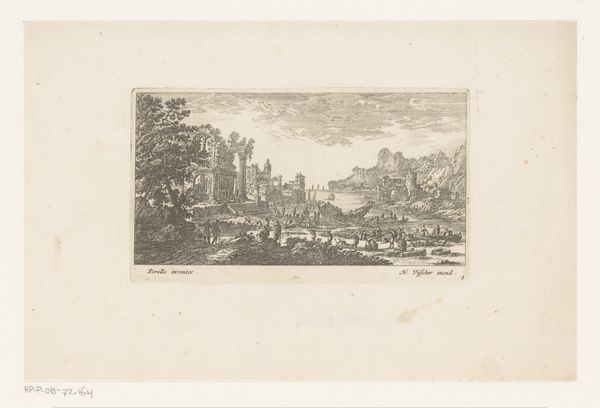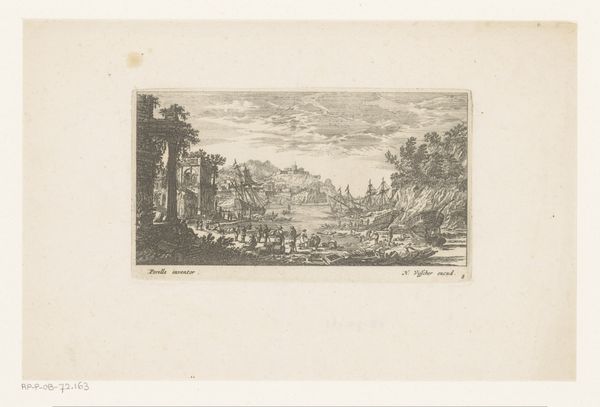
print, engraving
#
baroque
# print
#
old engraving style
#
landscape
#
cityscape
#
engraving
#
realism
Dimensions: height 218 mm, width 271 mm
Copyright: Rijks Museum: Open Domain
This print, "Gezicht op Gent," was made anonymously, and likely dates to the 17th or 18th century. It is an engraving, meaning that the image was incised into a metal plate, likely copper, with a tool called a burin, and then printed onto paper. The dense network of lines that define the architecture, landscape, and even the sky, speak to the labor involved. The engraver's skill is evident in their ability to create a convincing illusion of depth and texture. Lines were carefully placed to capture the qualities of stone, water, and foliage. Prints like these were not simply artistic statements, but were made for a growing market of consumers eager to see the world, even if only in reproduction. This print, therefore, is an object deeply embedded in the social and economic fabric of its time. It testifies to the close connection between artistic skill, commerce, and the expanding visual culture of early modern Europe.
Comments
No comments
Be the first to comment and join the conversation on the ultimate creative platform.

